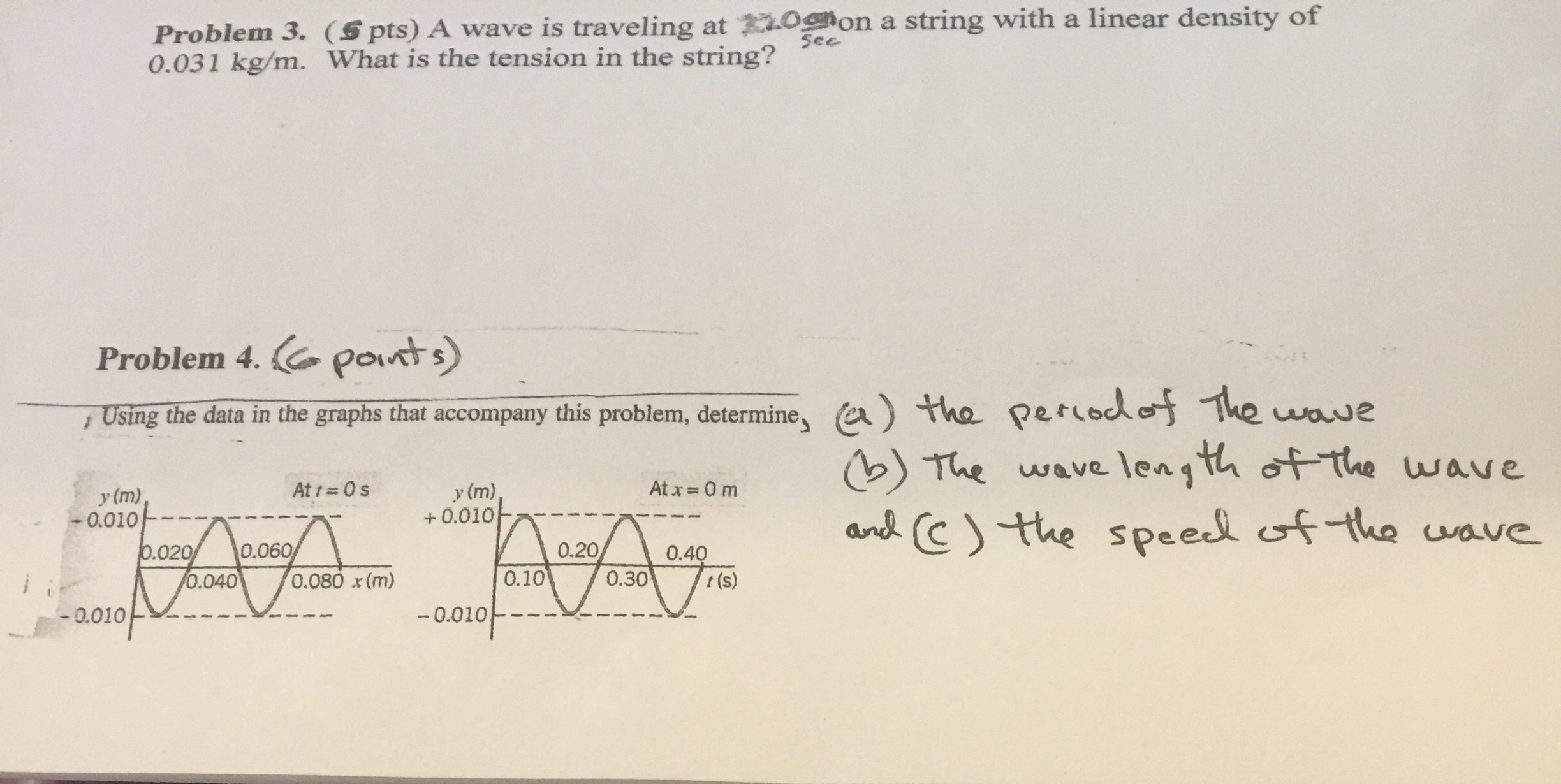Using the data in the graphs that accompany this problem, determine a) the period of the wave.. b) the wavelength of the wave... c)the speed of the wave?

1 Answer
(a) period = 0.2 s
(b) wavelength = 0.04 m
(c) speed = 0.2 m/s
Explanation:
To find the time period, we must find how long it takes for a complete oscillation, i.e. to repeat itself. From the graph on the right, we can see that
Note that
Similarly, the wavelength is the distance over which
The speed of the wave = wavelength

